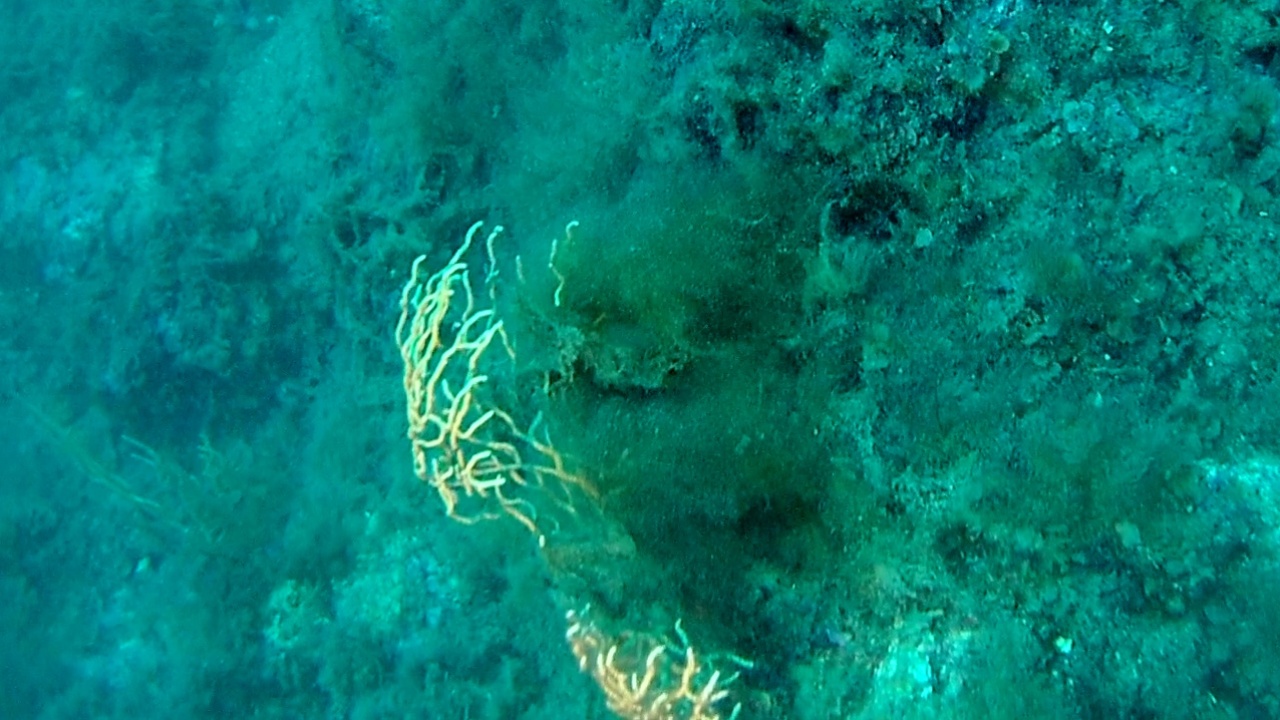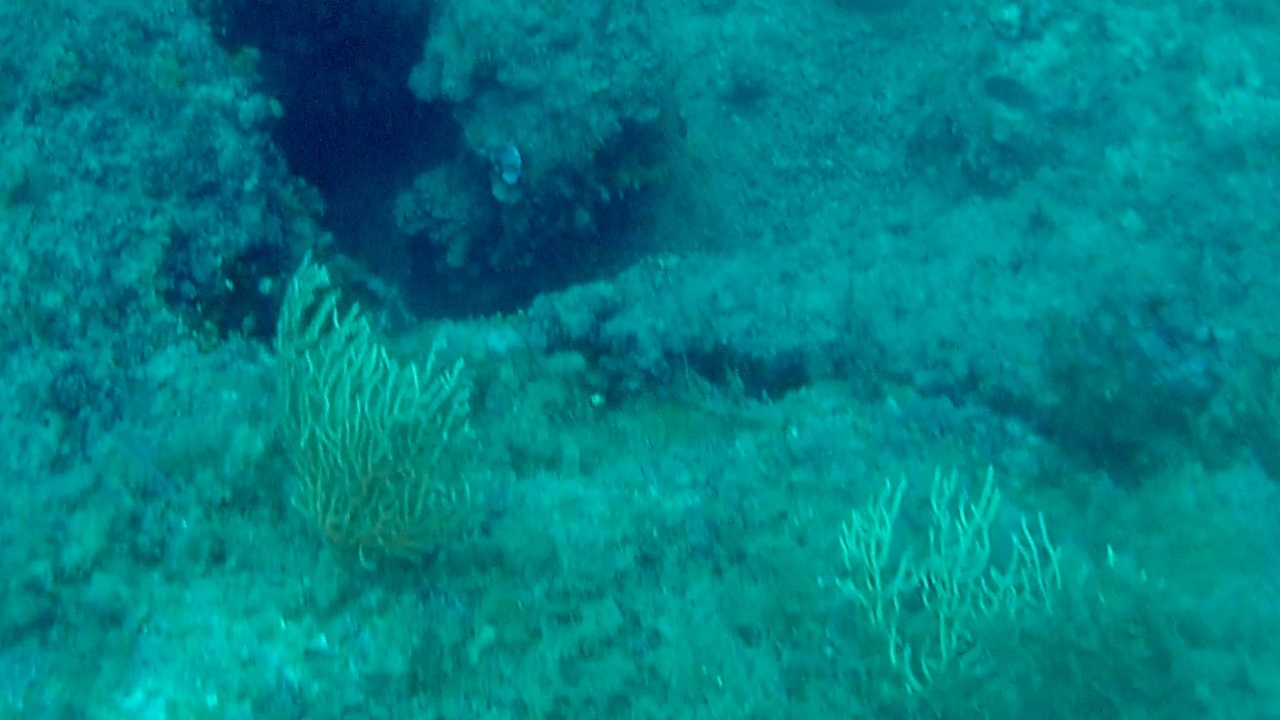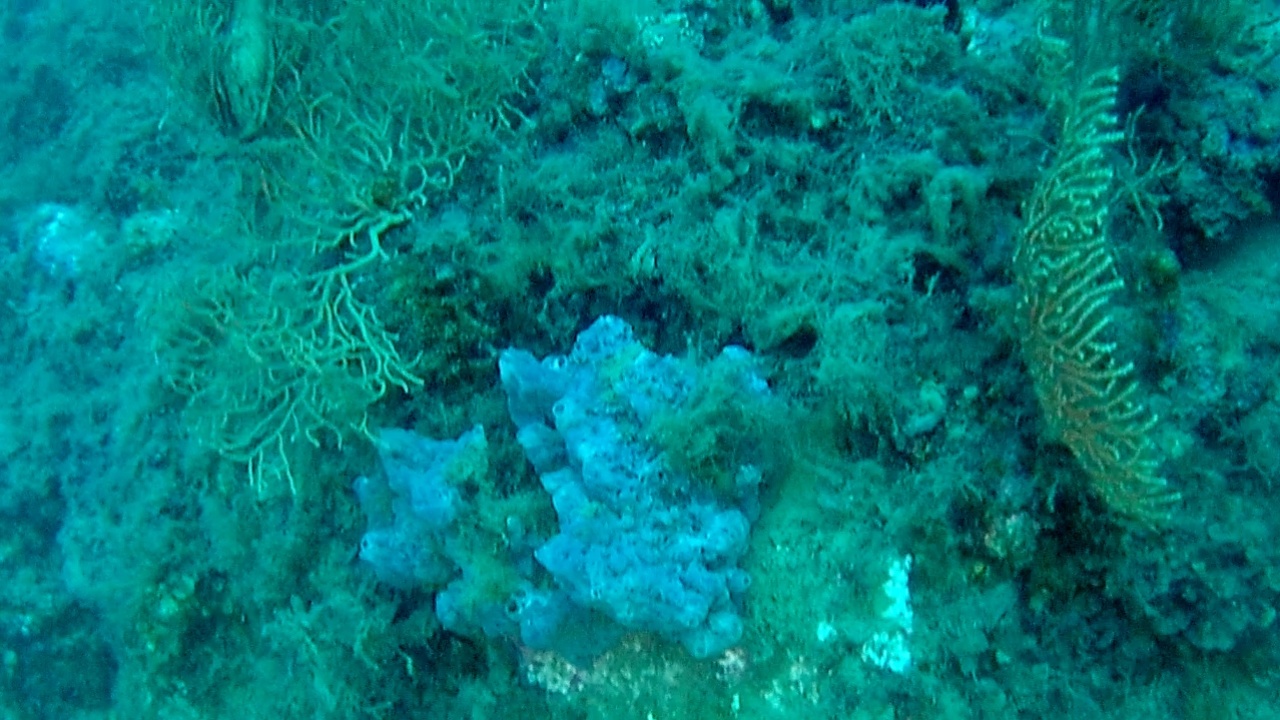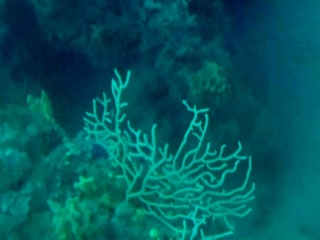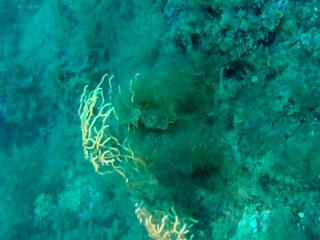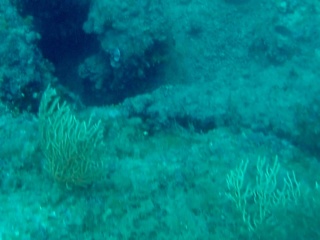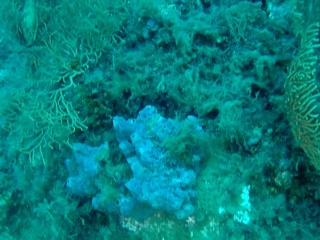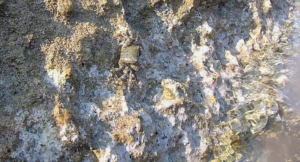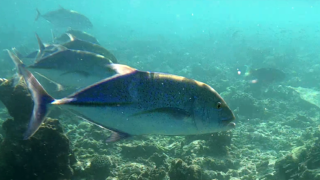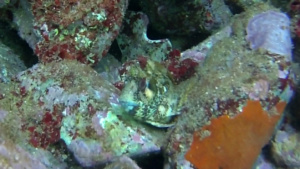Eunicella cavolinii, commonly known as the yellow gorgonian or yellow sea whip, is a species of colonial soft coral in the family Gorgonidae. It is native to parts of the western Atlantic Ocean and most of the Mediterranean, where it is a common species. Gorgonia gialla Eunicella cavolinii intotheblue.it
Eunicella cavolini is a much-branched soft coral growing to a height of about 50 cm. It is fan-shaped with the irregular, cylindrical branches largely growing in a single plane. The stem has an enlarged base fixed to the substrate and the branches are smooth, short and about 3 mm thick. The coenenchyme (the thin fleshy covering of the stiff skeleton) is yellowish-orange. The polyps are white to yellow, about 2 mm long and arranged in four rows. Eunicella cavolini can be confused with the warty gorgonian (Eunicella verrucosa). Eunicella cavolini is common throughout the Mediterranean Sea. It grows mainly between 10 and 30 m but can be found as deep as 150 m.
The polyps expand their tentacles to catch zooplankton. The food fragments are passed to the mouth and then move into the gut to be digested. The nutrients are then transferred to all parts of the colony via channels in the living matrix of the branches. The fan is usually orientated perpendicular to the current so as to maximise the capture of prey. Gorgonia gialla Eunicella cavolinii intotheblue.it
The growth rate is slow, at about 1 to 2 cm. per year.
Alcyonacea, or soft corals, are an order of corals that do not produce calcium carbonate skeletons. Formerly known as gorgonians, they are sessil colonial cnidarians found throughout the oceans of the world, especially in the tropics and subtropics. Common names for subset of this order are sea fans and sea whips and are similar to the sea pen, a soft coral. Individual tiny polyps form colonies that are normally erect, flattened, branching, and reminiscent of a fan. Others may be whiplike, bushy, or even encrusting. A colony can be several feet high and across, but only a few inches thick. They may be brightly coloured, often purple, red, or yellow. Photosynthetic gorgonians can be successfully kept in captive aquaria.
(exstract from Wikipedia)
 English
English Italiano
Italiano

